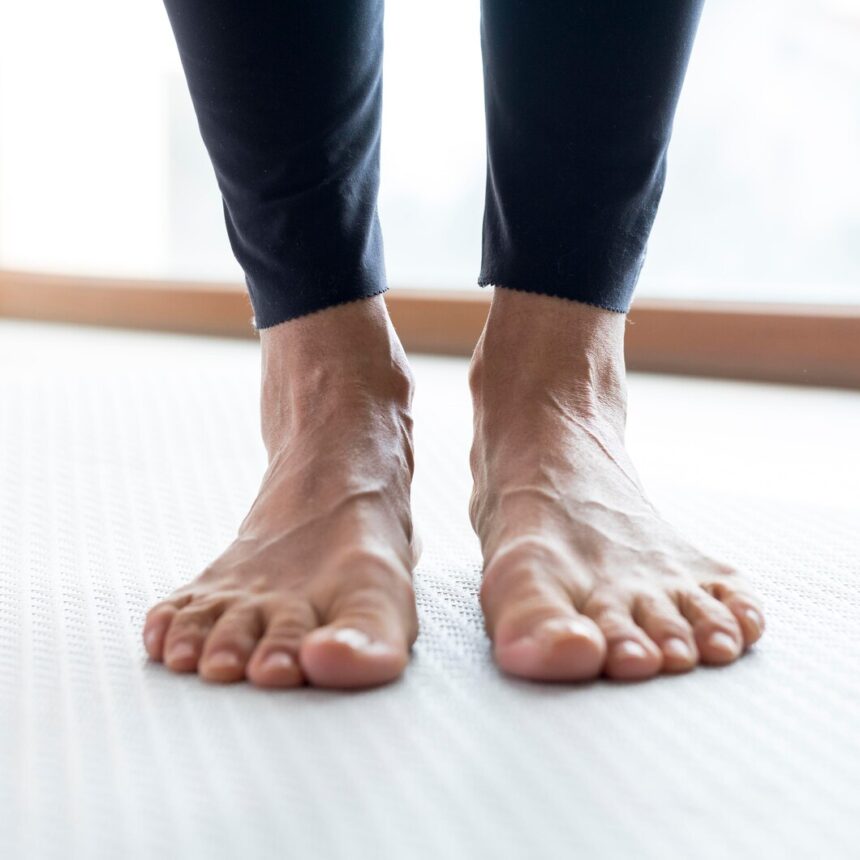Flat feet, or pes planus, is a common condition characterized by the collapse of the arch of the foot. This results in the entire sole of the foot coming into contact with the ground. While flat feet can be asymptomatic, they sometimes lead to discomfort and other issues. Here’s a detailed look at the symptoms, causes, and treatments for flat feet.
Symptoms:
- Foot Pain: People with flat feet may experience pain in the arch or heel of the foot. This pain often results from increased strain on the muscles and tendons supporting the foot.
- Swelling: Swelling in the foot or ankle, especially after prolonged periods of standing or walking, is a common symptom.
- Overpronation: Flat feet can lead to overpronation, where the foot rolls inward excessively during walking or running, potentially causing knee and hip pain.
- Foot Fatigue: A feeling of tired or achy feet after walking or standing for extended periods is another symptom.
- Difficulty in Finding Comfortable Shoes: Flat feet can make it challenging to find shoes that fit properly and provide adequate support.
Causes:
- Genetics: Flat feet can be hereditary. If one or both parents have flat feet, their children are more likely to develop the condition.
- Foot Structure: Some people are born with flat feet, while others may develop them due to the collapse of the arch over time.
- Aging: As people age, the tendons and ligaments supporting the foot may weaken, leading to flat feet.
- Injuries: Trauma to the foot or ankle can damage the tendons that support the arch, potentially causing flat feet.
- Medical Conditions: Conditions such as rheumatoid arthritis, diabetes, or obesity can contribute to the development of flat feet.
- Pregnancy: Hormonal changes and weight gain during pregnancy can affect the arches of the feet.
Treatments:
- Footwear: Wearing supportive shoes with good arch support can alleviate discomfort and prevent further complications. Custom orthotic inserts can also provide additional support.
- Physical Therapy: Exercises to strengthen the foot and ankle muscles can help improve arch support and reduce pain. Stretching exercises for the Achilles tendon and plantar fascia can also be beneficial.
- Over-the-Counter Orthotics: Insoles or arch supports available at pharmacies can provide temporary relief and improve comfort.
- Medications: Nonsteroidal anti-inflammatory drugs (NSAIDs) can help manage pain and inflammation associated with flat feet.
- Lifestyle Changes: Maintaining a healthy weight can reduce the strain on the feet. Regular exercise and proper foot care can also help manage symptoms.
- Surgery: In severe cases where conservative treatments are ineffective, surgical options may be considered. Procedures might include reconstructive surgery to repair or replace damaged tendons or to realign the bones in the foot.
Flat feet are a common condition, and while they can cause discomfort and complications, many people manage their symptoms effectively with the right treatments and lifestyle adjustments. Consulting with a healthcare provider or a podiatrist can provide personalized guidance and help in managing this condition effectively.










